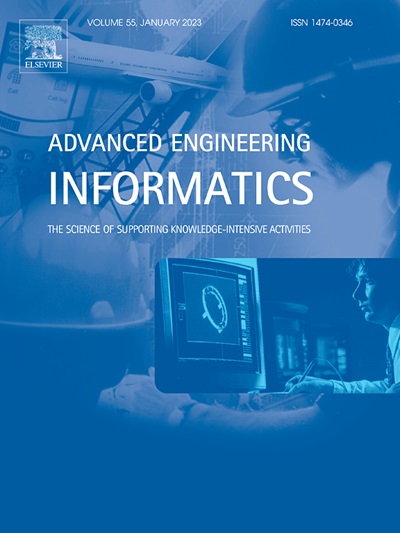边缘云协同驱动的选择性激光熔化表面粗糙度分类方法
IF 8
1区 工程技术
Q1 COMPUTER SCIENCE, ARTIFICIAL INTELLIGENCE
引用次数: 0
摘要
增材制造技术在航空航天和工业制造中得到了广泛的应用。然而,使用增材制造的零件容易球化、孔隙、裂纹和表面质量差,因此难以建立可操作的产品质量程度。因此,开发一种合理的方法将产品质量等同于一个新的程度,并在此基础上进一步分析产品质量,对于提高增材制造中零件的质量是有效的。为了实现这一目标,本文提出了一种利用表面粗糙度分析和样本增强的表面粗糙度分类方法。该方法利用边缘云合作,有效地分析和整合来自不同传感器的数据,实现制造过程的实时监控和调整。随后,利用物元可拓云模型开发了质量度分析系统。此外,建立了基于双向门控循环单元(Bi-GRU)的质量分类和识别模型,采用Wasserstein生成对抗网络(WGAN)进行样本增强,解决了不平衡列分类问题,提高了分类和识别的准确性。最后,对比实验结果表明,所提出的表面粗糙度分类方法可以准确识别98%的制备样品。本文章由计算机程序翻译,如有差异,请以英文原文为准。
Edge-cloud cooperation driven surface roughness classification method for selective laser melting
Additive manufacturing (AM) technology is extensively utilized in aerospace and industrial manufacturing. However, parts built using AM are susceptible to spheroidization, porosity, cracks, and poor surface quality, making it difficult to establish an actionable product quality degree. Hence, developing a reasonable method to equate product quality with a new degree and further analyzing the product quality based on these standards has proven effective for enhancing part quality in AM. To achieve this goal, this paper proposes a surface roughness classification method that utilizes surface roughness analysis and sample enhancement. This method leverages edge cloud cooperation to efficiently analyze and integrate data from different sensors, enabling real-time monitoring and adjustment of the manufacturing process. Subsequently, the quality degree analysis system was developed utilizing matter-element extension cloud model. Furthermore, a bidirectional-gated recurrent unit (Bi-GRU) based model for quality classification and recognition has been established, with Wasserstein generative adversarial network (WGAN) employed for sample enhancement to address the issue of imbalanced column classification and to enhance the accuracy of both classification and recognition. Finally, the results obtained from this case study demonstrate through comparative experiments that the proposed method for classifying surface roughness can accurately identify 98% of prepared samples.
求助全文
通过发布文献求助,成功后即可免费获取论文全文。
去求助
来源期刊

Advanced Engineering Informatics
工程技术-工程:综合
CiteScore
12.40
自引率
18.20%
发文量
292
审稿时长
45 days
期刊介绍:
Advanced Engineering Informatics is an international Journal that solicits research papers with an emphasis on 'knowledge' and 'engineering applications'. The Journal seeks original papers that report progress in applying methods of engineering informatics. These papers should have engineering relevance and help provide a scientific base for more reliable, spontaneous, and creative engineering decision-making. Additionally, papers should demonstrate the science of supporting knowledge-intensive engineering tasks and validate the generality, power, and scalability of new methods through rigorous evaluation, preferably both qualitatively and quantitatively. Abstracting and indexing for Advanced Engineering Informatics include Science Citation Index Expanded, Scopus and INSPEC.
 求助内容:
求助内容: 应助结果提醒方式:
应助结果提醒方式:


